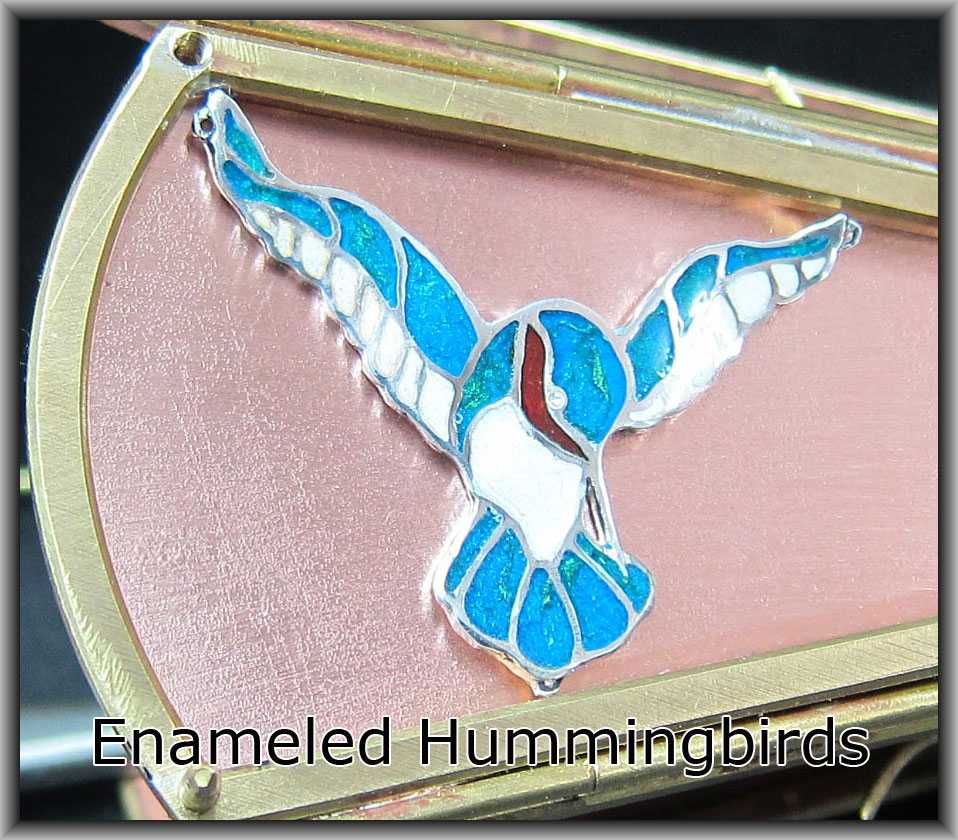
This mini 'How I do It' or 'Hidi' as I call them.
A Hidi is by no means a tutorial. With a tutorial, I show you how to do it.
With a Hidi, I show you how I did it.
These are some enameled hummingbirds that were part of a sculpture called Nest.
Unfortunately, Nest is no longer in my possession.
It and many other art pieces were stolen from me recently.
The pictures of the sculptures were going to be compiled into a record when the piece was sold.
However, since they were all stolen I decided to chronicle them all anyway.
So this then is the Enameled Hummingbird Hidi.


















